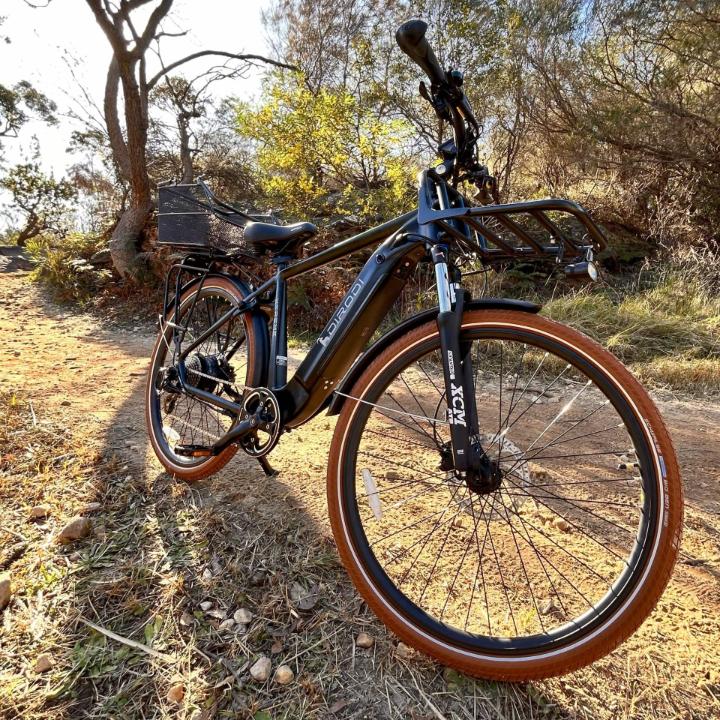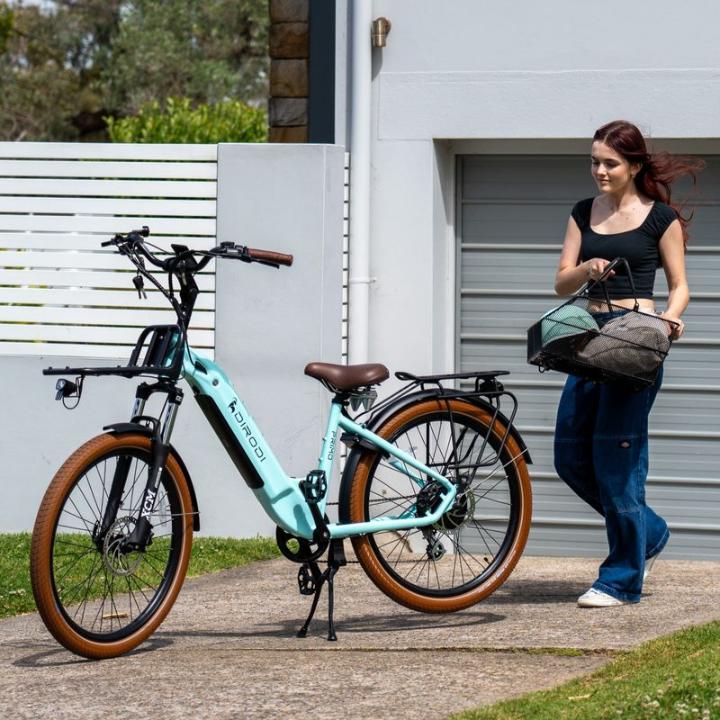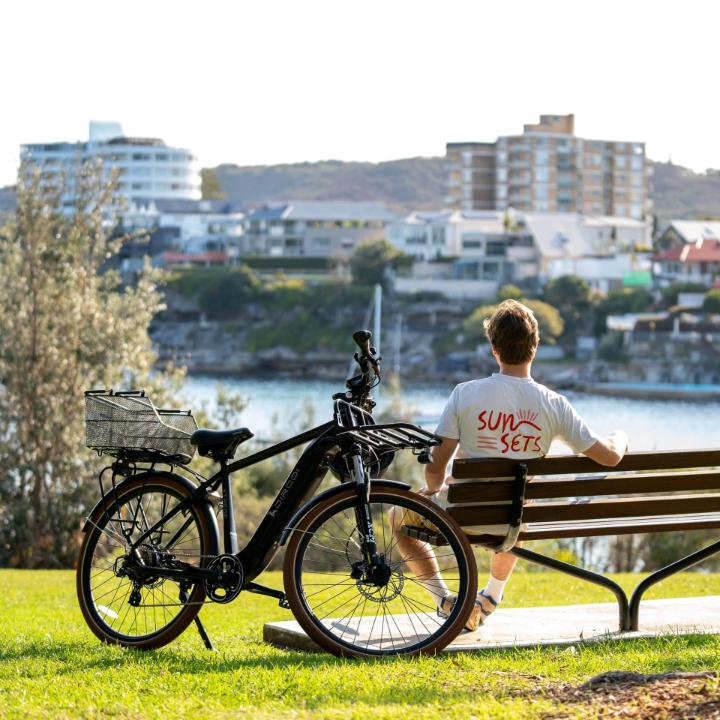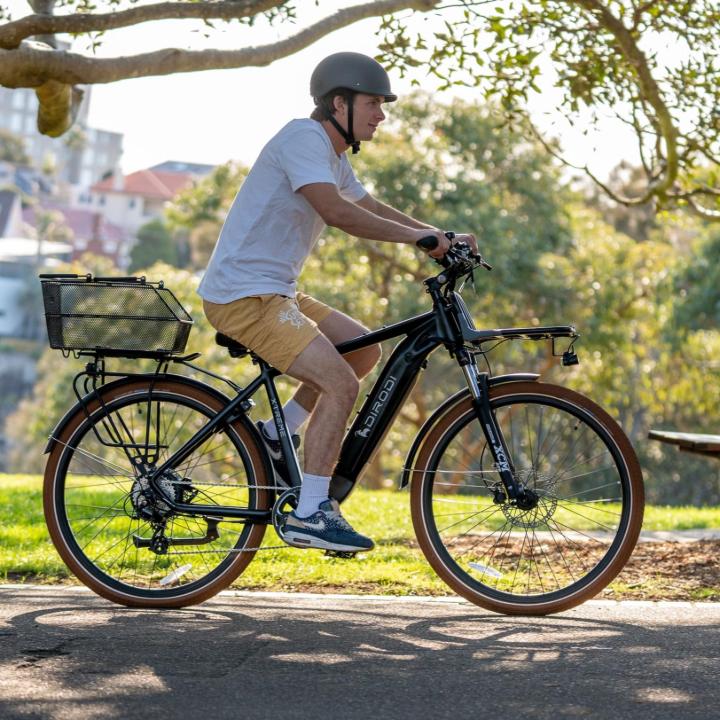The uptake of electric bicycles in Adelaide has been steadily gaining momentum over recent years, driven by changing commuter habits, advances in technology, and a growing local industry. This rise reflects not only a shift in how people move around the city but also a broader transformation in lifestyle, environmental awareness, and urban mobility.
While Adelaide has long been known as a car-centric city, cycling is becoming a more visible and viable transport choice. In the Greater Adelaide region, the share of e-bike trips has increased sharply since 2019, reflecting a growing enthusiasm for electric-assisted transport. Nationally, e-bike sales have surged while traditional bicycle sales have declined — a sign that Australians, including many South Australians, now view e-bikes as a practical commuting and lifestyle option rather than just a leisure product. The convenience and accessibility of e-bikes have made them appealing to people who might have previously found cycling too demanding or inconvenient.
Several factors unique to Adelaide have contributed to the growing popularity of e-bikes. The city’s relatively flat geography makes it ideal for cycling, and the expansion of bike-friendly infrastructure, such as the River Torrens Linear Park Trail and an increasing number of dedicated bike lanes, has made commuting safer and more efficient. Better end-of-trip facilities in workplaces and public spaces have also encouraged more people to choose cycling as part of their daily routine.
Another important driver of growth has been the expansion of local e-bike retail and service networks. Across Adelaide, more bike shops now specialise in electric bikes, offering not only a wide range of models but also reliable after-sales support, including battery servicing, software updates, and custom conversions. This availability has helped new riders feel more confident about investing in an e-bike.
Adelaide has also become a small but growing hub for e-bike innovation. Several local companies are developing advanced e-bike technologies, including new powertrain systems and locally manufactured components. This emerging industry hints at Adelaide’s potential to play a key role in the future of Australian electric mobility.
Government and local councils have also stepped in with incentives to make e-bikes more accessible. Some areas now offer rebate programs that help offset the initial cost of purchasing an e-bike or electric cargo bike. These policies, although modest, have been effective in encouraging first-time buyers and in supporting the city’s transition toward more sustainable transport choices.
For many Adelaide residents, the appeal of e-bikes comes down to convenience, cost, and lifestyle. Commuting by e-bike allows riders to cover longer distances and tackle hills or headwinds with ease, reducing both travel time and physical strain. What once felt like an impractical option for daily travel has become a fast and reliable alternative to sitting in traffic.
Affordability is another major factor. Compared with owning and maintaining a car, e-bikes offer significant cost savings. Riders avoid fuel costs, parking fees, and the high price of vehicle maintenance. Many local bike shops report that their customers are increasingly purchasing e-bikes specifically for work and school commutes rather than recreational use.
Health and wellbeing also play a major role in this shift. E-bikes allow people to enjoy the benefits of cycling — fresh air, exercise, and stress relief — without the exhaustion that can come from long or hilly rides. Combined with a growing awareness of sustainability and the desire to reduce carbon emissions, e-bikes have become a symbol of balanced, modern urban living in Adelaide.
1. E-Bike Public Infrastructure and Parking in Adelaide
1.1. The New E-Bike Network: How Adelaide Is Adapting Its Streets
Adelaide is in the midst of a quiet transport revolution. Once defined by cars and suburban sprawl, the city is now reshaping its streets to welcome the growing wave of electric bikes. In the past few years, e-bikes have evolved from a niche curiosity into one of Adelaide’s fastest-rising transport choices. Recognising this shift, city planners and the South Australian Government have begun treating cycling — and particularly e-biking — as a core element of the city’s mobility future.
Across the CBD and inner suburbs, separated bikeways are expanding and connecting key corridors to create safer, smoother routes for riders. These modern paths allow e-bike commuters to travel efficiently through the city without battling heavy vehicle traffic. Improved surfaces, upgraded intersections and clearer lane markings have turned cycling into a more predictable and comfortable experience. For the first time, Adelaide’s infrastructure signals a long-term commitment to electric mobility rather than a short-term experiment.

What makes this transition even more promising is how seamlessly e-bikes fit the city’s layout. Adelaide’s relatively flat geography makes it ideal for electric cycling, and the city’s network of linear parks and green trails offers natural foundations for expansion. As these corridors link up with new urban developments, the result is a cycling grid that’s both functional and enjoyable. Riders can now move between suburbs and the city centre with minimal interruptions — a far cry from the fragmented routes of just a few years ago.
Charging infrastructure is also beginning to appear alongside these pathways. While most riders charge their batteries at home, demand for public charging points is rising, especially among couriers, commuters and shared-fleet operators. Several councils are experimenting with charging lockers and e-bike docking stations in high-traffic areas. This small but growing trend shows how Adelaide is preparing for a future where electric cycling is an everyday habit, not just a weekend outing.
1.2. From Storage to Sustainability: The Future of E-Bike Parking in Adelaide
As e-bike use increases, secure parking and end-of-trip facilities have become just as important as the riding network itself. Traditional open bike racks no longer meet the needs of heavier, high-value e-bikes. In response, Adelaide is introducing modern parking hubs that feature covered shelters, lockable storage bays and even battery-charging options. These secure areas are being placed strategically near train stations, universities, business districts and retail centres, giving riders confidence that their bikes will remain safe throughout the day.
By integrating these facilities with public transport, Adelaide is promoting a new kind of mobility — one where people can easily combine e-biking with buses, trams or trains. Commuters can ride from home to a transport hub, leave their e-bike in a secure station locker, and continue their journey without worrying about theft or weather. This approach not only makes e-biking more convenient but also supports the city’s broader goals of reducing congestion and car dependence.

Local government programs are reinforcing this progress. Several Adelaide councils have launched rebate schemes to encourage residents to purchase e-bikes or electric cargo bikes, particularly for family use and short business deliveries. State funding has also been channelled into shared-path projects, lighting upgrades and new parking developments across metropolitan and regional areas. Together, these measures are building the physical and financial foundation for long-term electric mobility.
Of course, there’s still work to do. Some outer suburbs lack safe, connected paths, and many residential buildings don’t yet have secure storage for e-bikes. Continued collaboration between councils, developers and transport planners will be essential to close these gaps. The key challenge now is scale — ensuring that e-bike infrastructure reaches every community, not just the city core.
Even with these challenges, Adelaide’s direction is clear. The city is moving toward a transport model where e-bikes, public transit and walking are seamlessly integrated. By investing in modern parking, reliable charging and safe riding routes, Adelaide is laying the groundwork for a cleaner, more connected future. What’s emerging isn’t just a cycling city — it’s a smarter, greener Adelaide that’s redefining how people move.
2. Public Scenic E-Bike Trails in Adelaide
Adelaide is becoming a premier city for scenic e-bike riding, offering trails that blend natural beauty, gentle gradients, and smooth surfaces. From riverside paths to vineyard loops and Adelaide Hills routes, these trails let riders explore longer distances without fatigue while enjoying some of the state’s most picturesque landscapes.

2.1. River Torrens Linear Park Trail
The River Torrens Linear Park Trail, stretching approximately 30 km from Athelstone to Henley Beach, is one of Adelaide’s most iconic routes. It follows the river through parklands, gardens, and city areas, providing a mostly traffic-free corridor ideal for both commuters and leisure riders. The trail is mostly sealed and offers a gentle gradient, making it highly accessible for riders of all abilities. E-bikes allow visitors to cover the full distance comfortably while taking in riverside views, picnic spots, and shaded resting areas. Its urban connections make it easy to start or finish at multiple points along the trail, adding to its versatility and appeal.
2.2. Coast to Vines Rail Trail
Winding through the Fleurieu Peninsula, the Coast to Vines Rail Trail extends about 37 km from Marino to Willunga and showcases rolling countryside, vineyards, and historic towns. The path follows a former railway corridor, offering a mostly sealed surface with gentle inclines that are perfect for electric bikes. Riders can easily manage uphill sections while enjoying open rural landscapes, quaint towns, and scenic views. This combination of distance, scenery, and manageable effort makes the Coast to Vines Rail Trail ideal for day trips or weekend adventures, allowing riders to explore further than they could on a traditional bike.
2.3. Amy Gillett Bikeway
The Amy Gillett Bikeway in the Adelaide Hills is approximately 17 km long and runs through rolling terrain, forested areas, and valleys with expansive views over the Piccadilly Valley. Following a former railway alignment, the trail is fully sealed and features gentle inclines that are ideal for e-bike assistance. Riders can easily tackle the hills while focusing on the surrounding native bush and peaceful landscapes. The bikeway provides a perfect balance of nature, light exercise, and extended reach, letting riders explore charming towns and scenic vistas without the physical strain associated with traditional cycling.

2.4. Westside Bikeway
For a shorter, casual ride, the Westside Bikeway is around 9 km long, flat, and fully sealed, running from Mile End to Glenelg. It passes through parks, residential areas, and green spaces before reaching the coastal foreshore. This route is particularly suited to beginners, families, and anyone seeking a relaxed ride with minimal effort. Electric assistance allows riders to enjoy the urban and coastal scenery at a comfortable pace while covering the distance effortlessly. The simplicity and accessibility of the trail make it an ideal introduction to e-bike riding or a leisurely weekend outing.
2.5. Stuart O’Grady Bikeway
The Stuart O’Grady Bikeway stretches approximately 23 km through Adelaide’s northern suburbs into semi-rural areas, following former transport corridors with a wide, sealed path. The trail provides a continuous ride away from busy streets, making it perfect for those who want to enjoy longer distances without interruption. Electric bikes allow riders to maintain a steady pace along the suburban and semi-rural landscapes while taking in the natural scenery and quiet surroundings. This trail demonstrates Adelaide’s commitment to creating practical and enjoyable routes for both commuting and recreational cycling.
Adelaide’s public scenic e-bike trails stand out because of their smooth surfaces, gentle gradients, and strong connectivity. Rails-to-trail conversions, riverside paths, and hill routes allow riders to explore extensive distances without strain, while urban and natural environments are linked seamlessly. Planning a ride is straightforward: riders can check trail maps, gauge distance and terrain, and adjust pedal assist as needed to maximize comfort and battery efficiency.
These trails are more than
recreational paths; they represent Adelaide’s commitment to active, sustainable
transport. By combining scenic landscapes with practical infrastructure, the
city allows riders to experience rivers, vineyards, bushland, and suburban
areas effortlessly. With ongoing investment in trail connectivity and
maintenance, Adelaide’s e-bike network will continue to grow, encouraging
locals and visitors alike to explore the region in an enjoyable and
eco-friendly way.
3. E-Bike Theft Prevention & Secure Parking in Adelaide
As e-bikes grow more popular across Adelaide, more riders are relying on them for commuting, leisure and adventure. But with value comes risk, and the importance of Adelaide e-bike security is rising fast. This guide explores how to reduce the chance of theft and where to find truly secure e-bike parking in Adelaide.
3.1. Why E-Bike Theft Matters in Adelaide
E-bikes represent a higher investment than standard bikes and thus are increasingly targeted by thieves. In busy hubs like the Central Business District, university precincts and major public‐transport stops, it’s especially important to think ahead. The key is that e-bike theft prevention in Adelaide isn’t solely about locks—it’s about how and where you park and the extra layers of protection you use.
3.2. Secure E-Bike Parking Options Around the City
Being smart about parking is one of the most effective steps you can take. Fortunately, riders in Adelaide now have multiple safe choices:
- City-centre locations: The Adelaide City Council provides dedicated bike parking facilities including secure cages with CCTV, card access and shelter. Ideal for e-bike commuters heading into the CBD.
- Transport hubs: Many major stations under the Adelaide Metro network now incorporate secure bike lockers or cage-type parking, making it easier to combine your e-bike ride with public transport safely.
- Workplace & campus parking: Universities and larger workplaces are stepping up: secure bike rooms, accessible 24/7, often with charging options for e-bikes. These are great for those who ride daily and need reliable, secure e-bike parking in Adelaide.
Read more: Electric Bikes in Sydney: The Ultimate Guide
3.3. Best Practices for E-Bike Theft Prevention
Even with access to secure parking, your personal security habits make a big difference. Below are best practices tailored for Adelaide’s environment:
- Use a high-quality lock: A hardened steel D-lock or heavy chain is strongly recommended. Avoid thin cable locks—they’re too easy to cut.
- Lock properly: Secure both the frame and rear wheel to an immovable object in a well-lit, public spot.
- Remove valuable parts: The e-bike battery and display screen are often the first items stolen. Whenever feasible, take them with you.
- Register your e-bike: Use local schemes (such as the South Australia Police’s serial number register) or forensic marking systems to improve recovery chances if stolen.
- Consider tracking: A discreet GPS tracker hidden on the bike can give you real-time location info and help recovery if theft occurs.
- Choose your parking wisely: Even with a lock, parking for long periods in remote or unmonitored spots increases risk. Aim for secure cages, monitored stations or locked rooms.

3.4. The Evolving Landscape of Secure Parking in Adelaide
The future looks promising for riders. The city’s focus on cycling infrastructure doesn’t stop at lanes and paths—it now includes the security dimension. Innovations such as smart-access bike rooms, integrated CCTV systems and dedicated e-bike hubs are becoming more frequent in new developments and transport precincts.
Community awareness is also rising. Local councils and cycling groups are promoting theft-prevention campaigns, encouraging riders to adopt layered security habits and improving the overall culture of e-bike security in Adelaide.
4. Electric Bike Laws and Rules in Adelaide, Australia
As e-bikes grow in popularity across Adelaide and Australia, it's crucial for riders to understand the laws that govern their use. Whether you're commuting through the city, riding for leisure, or exploring South Australia’s scenic trails, staying compliant with local regulations ensures a safe and enjoyable experience.
4.1. Motor Power
E-bikes in Australia are generally classified into two main legal categories, based on how the motor assists the rider and the maximum continuous power output.
1. Pedal-Assisted E-Bikes (Up to 250 Watts): The most common road-legal e-bikes in Australia are pedal-assist models, often referred to as "Pedelecs." These bikes provide electric assistance only when the rider is pedaling. According to national law (except in NSW), these bikes must have a motor with a maximum continuous power output of 250 watts. The motor must cut off at 25 km/h, meaning electric assistance stops once you reach that speed.
A common misconception is that these bikes cannot have throttles. However, a throttle is allowed — as long as its function is limited to assisting only up to 6 km/h. This feature, known as a "start assist," helps the rider get rolling, especially when starting on an incline or from a full stop. After reaching 6 km/h, the rider must pedal to maintain assistance.
2. Throttle-Assisted E-Bikes (Up to 200 Watts): The second category includes e-bikes that can be powered entirely by throttle, without pedaling. These are limited to a 200-watt motor output, and like their 250W counterparts, the motor must stop assisting once the bike hits 25 km/h. However, due to the limited power, 200W throttle-only bikes struggle on hills and are less commonly manufactured or used in Melbourne.
As of February 2023, NSW updated its e-bike laws to allow 500W pedal-assist e-bikes, while maintaining the same throttle limitations (200W max). However, this increase in power does not apply in Victoria, where the 250W limit still stands for pedal-assist models.

4.2. Speed Limit
Although legal limits cap assistance at 25 km/h, e-bikes are often capable of higher speeds. For example:
- A 250W motor might reach speeds of 30 km/h with moderate pedaling.
- A 500W e-bike can reach 35–40 km/h.
- A 750W motor could go up to 50 km/h, depending on terrain and rider input.
However, using a high-powered e-bike above legal limits on public roads can be illegal. Some e-bikes, such as the DiroDi Rover 750W, come with settings that allow power limiting to 250W for road use. Still, authorities have not clearly defined whether this guarantees compliance, so it’s advised to consult your local transport department before using such bikes on public roads.
4.3. Helmets
Across all Australian states, wearing a helmet while riding an e-bike is mandatory. The helmet must be approved and certified to Australian Standard AS/NZS 2063, with newer models (post-2011) marked for compliance. Failure to wear a helmet can result in fines — but more importantly, helmets help prevent serious head injuries in accidents.
4.4. Carrying Passengers
The legality of carrying passengers depends on who the passenger is and how they’re being transported:
- Children can legally ride on e-bikes using certified child seats or bike trailers.
- Carrying adult passengers is generally not allowed, unless your bike is specifically designed and approved for it — which most standard e-bikes are not.

4.5. Licensing, Registration, and Road Use
You do not need a driver’s license to ride a legal e-bike in Australia. E-bikes are not required to be registered or insured like motor vehicles, as long as they conform to the definitions laid out by the Australian Road Rules:
- Throttle-assisted: max 200W, up to 25 km/h
- Pedal-assisted: max 250W, throttle assist only up to 6 km/h, also limited to 25 km/h
4.6. E-Bike Rules Specific to South Australia
In South Australia, electric bikes (e-bikes) are becoming a popular mode of transport,. The rules and regulations surrounding e-bike use are fairly straightforward and are mostly consistent with those in other Australian states. However, it’s important for all riders—especially new ones—to understand and follow these guidelines to ensure safety and compliance. To avoid fines or accidents, it's essential to be well-informed. For the full list of e-bike rules and detailed guidance, visit the official South Australia Government transport website: https://www.sa.gov.au/topics/driving-and-transport/cycling/cyclist-road-rules-and-safety
Electric Bikes in Adelaide: The Ultimate Guide